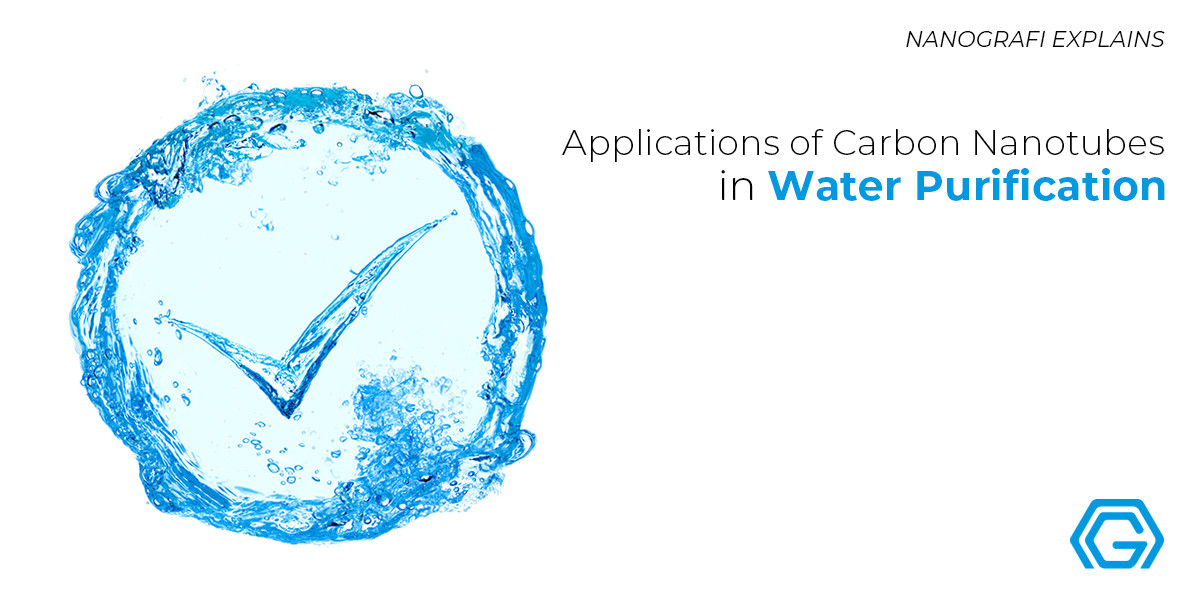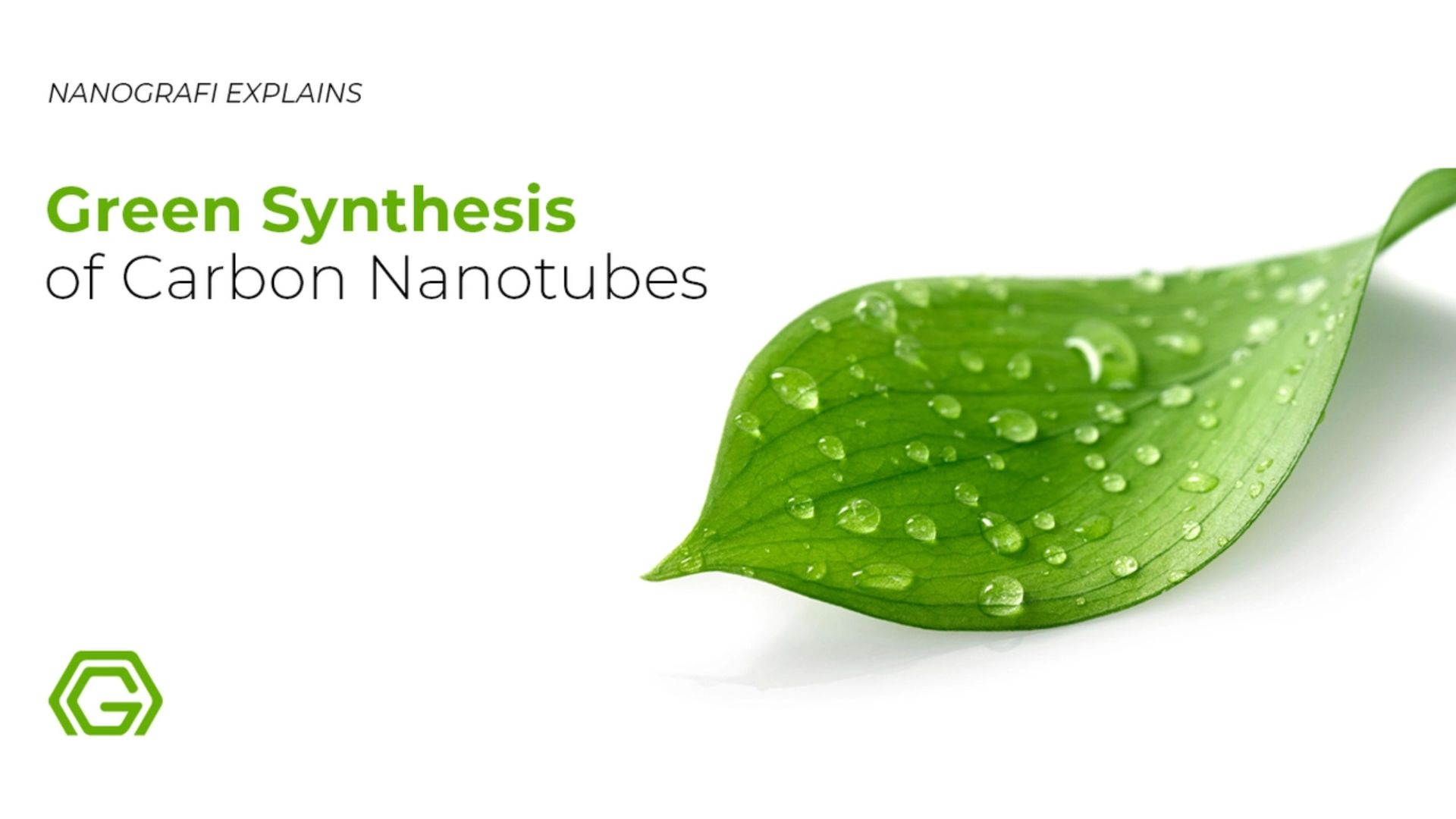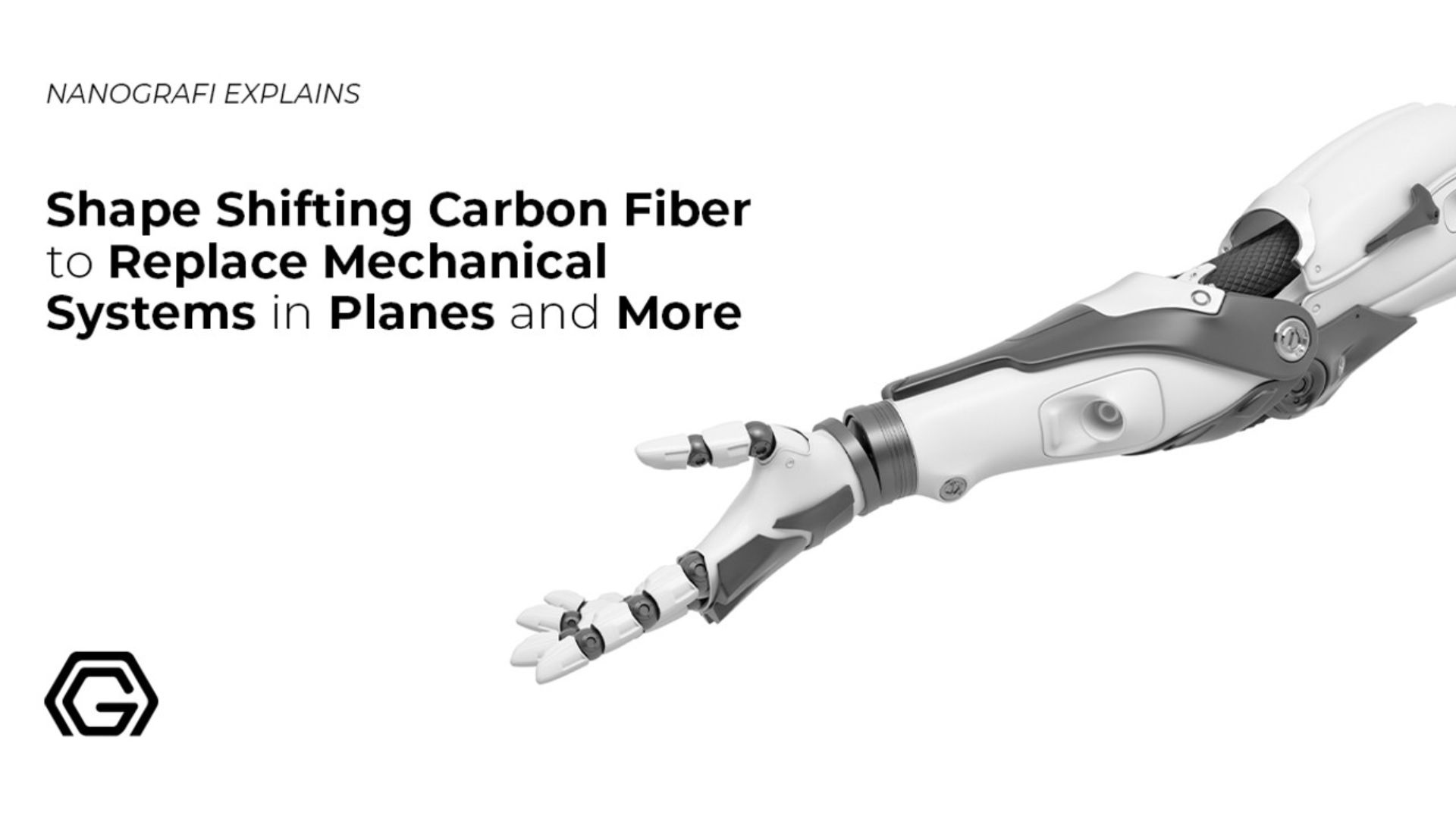Applications of Carbon Nanotubes in Water Purification
Carbon nanotubes are cylindrical molecules that consist of carbon atoms that are present in the form of sheets. They can either be single-walled or multi-walled depending upon the type and number of nanotubes involved. Carbon nanotubes exhibit excellent properties and characteristics owing to which they have a tremendous number of applications.
Water purification is one of the major things that is associated with carbon nanotubes. The entire process is carried out critically so that the carbon nanotubes can effectively be used for completing the process of water purification.
Introduction
Carbon nanotubes, also known as CNTs, are cylindrical molecules that are made up of rolled-up sheets of single-layer carbon atoms, like graphene. Carbon nanotubes can either be MWCNT (multi-walled carbon nanotubes) or SWCNT (single-walled carbon nanotube) with less than 1 nm (nanometer) of diameter, made up of various concentrically interlinked nanotubes, with more than 100 nm of diameters. Their length can be of various millimeters or micrometers.
Binding forces
Carbon nanotubes have a chemical bond with the sp2 bonds, like graphene which is their building block. Chemical bonds are a very strong form of molecular interaction. When these chemical bonds mix with the natural inclination of the carbon nanotubes to rope together because of the van der Waals forces, they make a possibility of developing a low-weight, ultra-high-strength materials possessing highly conductive thermal and electrical characteristics. All of these are the reasons for them being extremely attractive for several applications.
Carbon Allotropes
In the universe, the 4th most abundant element is carbon. It depends on the carbon atoms' arrangement and takes on a broad number of forms, known as allotropes. Remarkable characteristics of electrical conductivity and strength are displayed by the carbon allotropes.
Solid Carbon
Graphite and diamond are the two classical structures that are possessed by solid carbon at room temperature. An interesting field of carbon nano chemistry was opened after a breakthrough in 1985 when the existence of a new and third carbon allotrope was discovered and it possessed sixty perfectly symmetrically arranged carbon atoms (also called buckyballs, fullerene, or C60). Graphene was discovered in 2004 whereas the discovery of carbon nanotubes was made in 1991.
The Electrical Characteristics of Carbon Nanotubes
Nanotubes' electrical characteristics are determined by the graphene layers' rolling-up direction (chiral vector or rolling-up). The angle of the hexagonal carbon-atom lattice of the nanotube is described by chirality.
Armchair Nanotubes – These are known as armchair nanotubes due to their edges being of armchair-like shape. They are highly demanded due to their excellent conductivity. They also possess identical chiral indices. They are not like the zigzag nanotubes. If you turn an armchair's graphene sheet to 30 degrees, the nanotube will change to zigzag and vice versa.
Conductivity of Carbon Nanotubes
Like metals, multi-walled carbon nanotubes are always conducting and they obtain conductivity of the same level, whereas the chiral vector of the single-walled carbon nanotubes determines the conductivity of the SWCNTs: they can be electrically conducting and act as a metal; exhibiting the semiconductor's characteristics or be non-conducting. A little change for instance in the helicity's pitch can be the reason for the tube being transformed from a metal into a large-gap semiconductor.
The Characteristics Carbon Nanotubes
Other than their inherited electrical characteristics from graphene, carbon nanotubes also possess remarkable mechanical and thermal characteristics, making them interesting in developing the new materials:
- As compared to the steel’s mechanical tensile strength, the mechanical tensile strength of the CNTs can be 400 times more.
- They are extremely lightweight and as compared to steel, their density is one-sixth of it.
- They have better thermal conductivity than diamonds.
- A high aspect ratio of more than 1000 is possessed by them, i.e. they are very thin concerning their length.
- A tip-surface area near the theoretical limit (the field enhancement factor will be greater if the electric field is more concentrated and the tip-surface area is smaller).
- CNTs are extremely chemically stable like graphite, and they virtually resist any chemical effect until they are exposed to oxygen and high temperatures simultaneously - a characteristic which makes the carbon nanotubes very resistant to corrosion;
- Various nanomaterials can fill the hollow interior of the carbon nanotubes, shielding and separating them from the surrounding environment - a characteristic which is very beneficial for the applications of nanomedicine like drug delivery.
Carbon nanotubes are the excellent candidates for the electrical shielding applications, electrostatic discharge (ESD), cathode ray tubes (CRTs), hydrogen storage cells, white light sources, lithium-ion batteries, electron field emitters, transistors, electrochemical/chemical and biosensors, and electronic devices because of all these characteristics of the carbon nanotubes.
The Discovery of CNTs
Every year, there is a publication of thousands of papers on the carbon nanotubes or the related areas and in most of them, the credit for discovering the carbon nanotubes is given to Sumio Iijima. In 1991, he wrote a ground-breaking paper in Nature known as the Helical microtubules of graphitic carbon, which reports the MWCNTs discovery. One can also say by reviewing the scientific literature that Iijima discovered carbon nanotubes. Iijima surely had made two significant contributions to the field, although literature's careful analysis shows that he is not the one who has discovered the carbon nanotubes and their existence.
To get more information about the synthesis of carbon nanotubes,
you can read our blog post here.
Chronological Events Towards The Carbon Nanotube’s Discovery
In the editorial journal Carbon, the chronological events resulted in the discovery of the carbon nanotubes were cleared. The origin of the carbon nanotubes can be pre-historic in nature according to the deeper history of the carbon nanotubes.
The Importance of Clean Water
When it comes to our ecosystem and human life, clean water is a significant resource. Although, due to the population's increasing growth and urbanization and the economy's rapid development, cost-effective water treatment technologies are highly required by the Issue of increasing pressure on water scarcity for producing clean water of high quality. Brackish water and seawater desalination technologies on one hand are the most significant methods possessing great promise of increasing the clean water supply effectively by producing freshwater in more amount.
Total Seawater Sources
On Earth, 98% of water is brackish water and seawater, which shows that a tiny percentage of water is supposed to have a huge influence on the issue of scarcity of fresh water. Moreover, in the past decades, wastewater recovery and recycling technology have been a huge trend for achieving water sustainability. The reusing of the wastewater doesn't only decrease the risk of environmental discharge but also lessens the pressure on the freshwater resource shortage.
Water Treatment Technologies
Membrane separation technology is broadly accepted among the numerous techniques for water treatment as an emerging method for desalination of both brackish water and seawater. It also reuses the wastewater. Moreover, it is one of the significant technologies for sustainable environmental pollution control engineering because of the benefits it offers, like low pollution, low energy consumption, low operating cost and capital, easy operation, and high efficiency and stability. The property and structure of the membrane mainly limit the membrane's separation performance fundamentally.
Inorganic and Organic Membranes
A huge amount of attention has been gained by both the inorganic and organic polymeric membranes as far as the membrane materials are concerned. The main reason for this interest is water treatment at both the industrial and laboratory scales. Although, there is a trade-off relationship of the traditional membrane materials between the permeability and selectivity, and low anti-fouling characteristics too. There needs to be designing and fabrication of the new types of membranes for overcoming these serious limitations and for increasing selectivity (or rejection) and permeability (or flux) as well as the fouling resistance.
Carbon Nanotube's Fabrication, Growth, and Characterization
Methods of Fabrication
There has been the availability of various methods to fabricate carbon nanotubes recently, like chemical vapor deposition (CVD), laser ablation, and electric-arc discharge. If you change the process parameters of the fabrication methods that are available right now, then you can controllably adjust the Carbon nanotubes' structure and morphology. The chemical vapor deposition (CVD) method is the most famous and broadly utilized among these methods because of its comparatively flexible and simple process, easy operation, and low set-up cost. Moreover, this method is the most possible way of producing high purity carbon nanotubes at a high yield with a controllable structure.
The chemical vapor deposition process is a thermal dehydrogenation reaction in which a hydrocarbon vapor passes through a tubular reactor and in that reactor, a transition metal catalyst is present like cobalt, nickel, or iron at a high temperature of 600-1200 degrees celsius for decomposing the hydrocarbon.
Growth Mechanisms
Since their discovery, there have been debates on the carbon nanotubes' growth mechanisms. One can outline the broadly accepted growth mechanism of the carbon nanotubes as follows. There has been proposition of the two different mechanisms including vapor solid-solid (VSS), and vapor-liquid-solid (VLS) in two general cases based on the metal catalyst's state and carbon's diffusion way at high temperature.
A carbon precursor is absorbed at high temperature and then it is decomposed on the low-melting-point catalyst nanoparticles surface for forming the carbon atoms. Then, there is the dissolving of the carbon atoms into the catalyst nanoparticles' bulk for forming a liquid metal carbide phase that may decompose into the carbon atoms and the catalyst at the interface between the substrate and catalyst, where there is a precipitation of the carbon atoms for forming the nanotubes.
Release of Carbon Atoms
More carbon atoms are released into the interface of the catalyst-substrate, allowing the continuous growth of the carbon nanotubes as the reaction proceeds. This process is called the VLS mechanism. In literature, there is a broad discussion of the VLS mechanism based on both the experimental observation and kinetic data. Proposing a VSS growth mechanism is well accepted in the CVD process, comprising of three successive steps. At first, there is a decomposition of the carbon precursor for forming the carbon atoms. Then, there is a spreading of the carbon atoms over the catalyst nanoparticles' surface and they move toward the interface between the substrate and the catalyst. And at last, there is a precipitation of the carbon atoms on the interface by a process of precipitation-nucleation-crystallization in the form of the growth of carbon nanotubes.
Two Growth Models
There are now generally two CNTs growth models according to the strength of interaction between the substrates and the catalyst particles, involving base growth morel and tip growth model. There is a decomposition of the carbon precursor into the carbon atoms on the catalyst particle surface’s top when there is wear interaction strength between the substrate and the catalyst, then there is the diffusion of the carbon atoms through the catalyst, and carbon nanotubes grow from the catalyst bottom, therefore pushing the whole catalyst away from the substrate.
Carbon nanotubes continuously grow and become longer if there is still availability of the catalyst surface for more carbon precursor decomposition. The carbon nanotubes stop growing when there is a complete covering of the catalyst by the excessive carbon atoms because of the catalyst's deactivation. This is known as the tip growth model.
To get more information about the utilization of carbon fibers,
you can read our blog post here.
Interaction Between The Substrate and Catalyst
Like the tip growth model, the carbon atom's diffusion and the carbon precursor's decomposition are similar when the interaction strength between the substrate and the catalyst is strong. Although at first, a hemispherical dome is formed by the carbon atoms on the catalyst's top, then it grows into the shape of a seamless graphitic cylinder for forming the carbon nanotubes. Thus, there is always a fixing of the catalyst on the base for supporting the carbon nanotubes' growth. This is known as the base growth model.
The Characterizations of Carbon Nanotubes
Numerous advanced techniques have been used in a lot of efforts for characterizing and analyzing the carbon nanotubes assessing their morphologies and characteristics and for particularly analyzing and recognizing the carbon nanotube’s property, structure, and state. The two famous techniques that are broadly utilized for observing the carbon nanotubes’ morphology and position of sidewall and tip, are transmission electron microscopy (TEM) and scanning electron microscopy (SEM).
Infrared Spectroscopy
Thermogravimetric analysis (TG), X-ray photoelectron spectroscopy (XPS), and infrared spectroscopy are normally utilized for particularly verifying the occurrence of the carbon nanotubes' functionalization reactions for the final quality evaluation. Thus, one can obtain the optimized carbon nanotubes for numerous practical applications by changing the CVD preparation parameters and reactants like time, pressure, temperature, substrate, catalyst, carbon precursor, and gas flow rate assisted with numerous characterization and functionalization methods.
Raman Spectroscopy
One of the most powerful techniques to characterize carbon nanotube is Raman Spectroscopy. It is used in routine for evaluating the made carbon nanotubes' purity and quality. Carbon nanotube's Raman spectrum shows two main first-order bands. D band is observed around 1300-1350 cm-1, whereas the G band is almost located at 1500-1600 cm-1. Thus, usually, the area ratio of the G and D band (ID/IG) is measured for estimating the level of the defects in a particular carbon nanotubes sample.
Water Treatment Applications of Carbon Nanotubes
When it comes to a famous type of separation membrane for water treatment, the best choice is the carbon nanotube-based composite membrane as it joins the traditional membrane material's excellent performance with the remarkable performance of the carbon nanotubes. There have been extensive studies on some rising water treatment applications like removal of heavy metal ions, oil-water separation, water desalination, and the rising pollutants in water by utilizing carbon nanotubes-based composite membranes. Thus, there is extensive discussion on these water treatment applications in the following sections.
Water Desalination
Almost 98 percent of all the water that is present on earth, comes from either seawater or brackish water and thus it has been reported that even a tiny difference in this percentage can cause a major impact on the issues of water scarcity. So in terms of keeping the water percentage maintained and keeping a distance from the major water shortage issues, we need to use various techniques which can help promote and increase the water storage via seawater and brackish water by continuing to generate freshwater from the seas. The most common and used technology is the membrane separation technology which is considered the best route to obtain fresh water from the seas in a rather very economical way. Currently, Caron nanotubes are being used to carry out this entire process through a series of processes known as reverse osmosis, Nono filtration, and membrane distillation.
Oil-Water Separation
There has been a production of high volumes of wastewater in oil-water emulsion form in numerous sources like domestic sewage, transportation, oil refining, production of crude oil, and others. Severe damage can be caused to human health and the environment if the oil-water emulsion wastewater gets discharged into the water. There has been a broad application of membrane filtration including nanofiltration (NF), ultrafiltration (UF), and microfiltration (MF) for the oil-water treatment with the benefits of small footprint, low energy consumption, and production of high-quality water. Although, the deformable nature of the oil droplets is the reason for this difficulty, leaving the only usage of the size-exclusion separation not effective enough to completely remove the oil from the water.
Removal of The Heavy Metal Ions from The Wastewater
One or multiple toxic metal ions are contained in the wastewater from many industries like battery industries, chemical manufacturing, mining operation, and metal plating facilities. Carbon nanotubes have been recently utilized as promising adsorbents for metal ions' adsorption like Cr(VI), Co2+, Cd2+, Cu2+, Sr2+, Ni2+, Zn2+, and Pb2+. Converting the carbon nanotubes' excellent absorption ability into a valuable and cost-effective filtration membrane for particular applications is the current challenge. A versatile and highly efficient carbon nanotubes-based composite filter was explained by Parhan et al. on this basis for removing the heavy metal ions from the water. Almost 100% heavy metal ion removal efficiency is possessed by the composite membranes.
Method of Fabrication
A novel adsorptive membrane was also similarly made by Tofighy et al. for the removal of Ni2+ ions from the water by implanting the carbon nanotubes in the ceramic membrane substrates’ pore channels through chemical vapor deposition. Both Freundlich isotherm and Langmuir models well matched the membrane’s adsorption behavior. Although, the membranes only used carbon nanotubes adsorption capability for metal ion removal without using membrane filtration effect because of the comparatively large pore size of the new ceramic carbon nanotubes-based composite membranes. Thus, the membrane efficiency was low in a continuous filtration operation model that is not practically viable for applications.
Phase Inversion Method
The phase inversion method was used by Shah et al. to functionalize the CNTs-PSF composite membranes. Carbon nanotubes' presence imparted the excellent adsorptive nature of the membranes effectively, and it lessened the size of the pore to the 20-30 nm of range, therefore helping the membranes be efficient enough to remove the metal ion under continuous filtration operation.
Emerging Pollutant’s Removal from Wastewater
There are the existence of emerging pollutants like environmental endocrine disruptors (EEDs), persistent organic pollutants (POPs), and pharmaceutical and personal care products (PPCPs), in the low concentration environment but they cause serious harm to the human health and ecology. Thus, in recent years, more and more attention is gained to the removal of the rising pollutants in the wastewater or water. Interestingly, there was fabrication and usage of the novel CNTs-PVDF composite membrane in the filtration of ibuprofen (IBU), acetaminophen (AAP), and triclosan (TCS) for determining the mechanisms and capabilities of the PPCPs removal.
Removal Rates
The range of removal rates was from almost 10-95%, and it increased with carbon nanotubes with more specific surface area, lesser surface oxygen content, and PPCPs with more aromatic rings. The carbon nanotube-based composite membranes can remove PPCPs for a long period of separation time, with no need for regeneration, and that is significant to the practical application, considering PPCPs' comparatively low initial concentration in a municipal wastewater or natural water.
Conclusion
Carbon nanotubes are known for the excellent applications that they exhibit in return enhancing the productivity and usage of the product itself. Water purification is one of the necessities of human life and carbon nanotubes play a huge role in doing this job. A lot of techniques and methods are used to carry out this process which is benefiting the industries and human lives.
To get more information, you can visit Blografi.
References
https://www.ncbi.nlm.nih.gov/pmc/articles/PMC5371977/
https://www.sciencedirect.com/science/article/abs/pii/S1383586618312437
https://www.mdpi.com/2504-477X/4/3/135/htm
https://cdn.intechopen.com/pdfs/38077/InTech-Potential_of_carbon_nanotubes_in_water_treatment.pdf
https://www.researchgate.net/publication/258500340_Application_potential_of_carbon_nanotubes_in_water_treatment_A_review
Recent Posts
-
Nanocomposites in Food Packaging
The utilization of nanocomposites in food packaging represents a significant advancement in the fiel …19th Apr 2024 -
What is the Difference Between 7075 and 6061 Aluminum Alloy?
When comparing 7075 aluminum alloy to 6061 aluminum alloy, it's essential to understand their disti …5th Apr 2024 -
Iron-Air Batteries: The Ultimate Guide
Iron-air batteries represent a significant breakthrough in energy storage technology, offering a sus …29th Mar 2024








